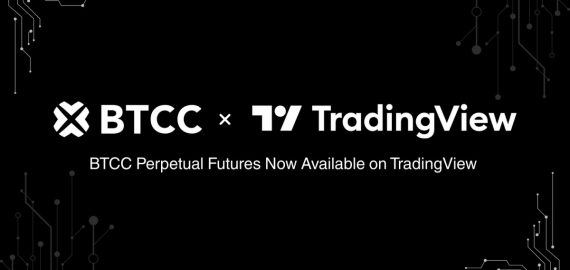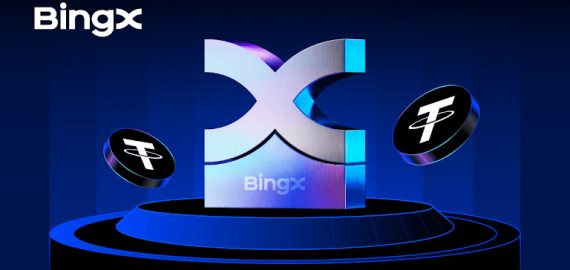Roam’s Telecom Data Layer: Pioneering the Future of DePIN


Roam introduces Physical L1 model to build a decentralized Telecom Data Network, expanding market potential and leading new narratives in DePIN.
The Decentralized Physical Infrastructure Network (DePIN) sector emerged in 2019 and has grown significantly over the years, with total token market capitalization reaching billions of dollars. However, DePIN still faces numerous challenges, including a mismatch between user needs and available products, scalability issues, unsustainable economic models, and limited infrastructure expansion. These obstacles have restricted the widespread adoption of DePIN projects, confining many participants to token speculation and limiting the sector’s overall impact.
An exceptional DePIN project should possess the following characteristics:
- Real application needs
- User-friendly products that meet those needs
- Significant market potential
- Solid data foundation
- Strong industry endorsements
Roam stands out as one of the few DePIN projects meeting all these criteria. With the recent launch of its Telecom Data Layer, Roam is building a decentralized telecom data network using the Physical Layer 1 (Physical L1) model to handle specific data types. This infrastructure enables the development of rich and practical applications that serve users effectively, elevating Roam beyond traditional DePIN projects. By becoming the foundational layer of DePIN, Roam significantly expands its market potential and opens up new possibilities for innovation.
Addressing Real Needs with Innovative Products
In today’s society, internet access is as essential as water and electricity. However, seamless connectivity is not always readily available, especially for travelers who often face poor network signals, high data fees, repetitive logins, and lengthy registration processes. Roam is committed to building a global decentralized WiFi roaming network. Utilizing Decentralized Identity (DID) and Verifiable Credentials (VC) technologies. Roam offers users a secure, seamless, and global wireless experience.
Key Features of Roam:
- Global Free WiFi Roaming: Roam’s services are free for end-users, providing unrestricted access to WiFi networks worldwide.
- Global Free Data with eSIM: Users can obtain free international data within the Roam app, even in areas without WiFi coverage, ensuring constant connectivity.
- User-Friendly Experience: With a simple registration on the Roam app, users can connect to global WiFi networks effortlessly through Roam’s multi-chain wallet.
- Privacy and Security: DID and VC technologies safeguard user information, while zero-knowledge proof allows identity verification without disclosing personal data.
- Token Incentives: Users receive token rewards for activities like registration, referrals, and sharing. Network providers earn tokens by sharing WiFi resources or using Roam routers like the Rainier MAX 60.
- Comprehensive Network Infrastructure: Roam distributes hardware supporting computing, storage, and connectivity, such as WiFi routers and AP access points, forming the backbone of its network.
Telecom Data Layer: Surpassing DePIN
Roam’s latest initiative introduces a broader vision for future development. Traditional DePIN projects focus primarily on user adoption at the application layer. In contrast, Roam extends its focus to the physical layer. A vast network of Roam mining nodes has been established, each providing network services and generating location and time data during user interactions. This forms a decentralized telecom data layer, with core data synchronized to the blockchain in real time and stored on Solana and other collaborative blockchains. This infrastructure unlocks broader application scenarios and offers richer services to users.
Roam connects people to devices, as well as devices to devices (Internet of Things), devices to data, and devices to AI. While leveraging blockchain technology to build its digital ecosystem, Roam is not confined to blockchain data systems. It rapidly deploys infrastructure hardware using DePIN advantages but extends services beyond DePIN’s traditional scope. For instance, Roam can support Content Delivery Networks (CDN) and Virtual Private Networks (VPN), positioning itself at a more foundational level than the application layer.
Building a Platform for Diverse Applications
The Roam Telecom Data Layer, built through the Physical L1 model, establishes a global decentralized telecom data network rooted in DePIN’s foundational layer. This allows various projects to utilize Roam’s Telecom Data Network to develop richer services and diverse applications—not limited to WiFi and data traffic related to Roam. The platform supports multiple sectors, including information storage, data communication, AI computing, and edge computing, fostering a robust ecosystem. It enables data interoperability between different projects and interconnectivity between devices.
Implementing a data network is more challenging than developing application layers, but Roam has made significant strides. With over 600,000 nodes synchronizing information in real-time, Roam is constructing a new, expansive Internet of Things network. The ecosystem’s data layer is based on blockchain technology, where DID usage extends beyond humans to devices and AI, advancing toward a “Blockchain of Things (BoT).” The Physical L1 model expands Roam’s market potential, evolving it from a DePIN project into a platform capable of nurturing a prosperous ecosystem and enabling new narratives.
Solid Data and Strong Endorsements
Roam boasts over 760,000 app users across more than 190 countries, covering over 3.5 million OpenRoaming nodes. Users have added an additional 710,000 self-built network nodes, making Roam the third-largest DePIN project on Depinscan.io.
Strong Industry Endorsements:
- Wireless Broadband Alliance (WBA) Membership: Roam is the only Web3 Identity Provider (IDP) within the WBA, the global authority setting standards for the wireless broadband industry. Members include industry giants like AT&T, BT, Boingo, Cisco, Deutsche Telekom, KT, Orange France, True Internet, and TMN/Portugal Telecom.
- Technology Partnerships: Roam has established deep collaborations with leading companies and platforms such as Samsung, Cisco, Intel, and Solana.
- Hardware Manufacturing Collaborations: Partnering with Xiaomi’s supply chain, Roam has developed and produced high-quality WiFi routers, including the Roam Rainier MAX 60 and Roam Baker MAX 30.
- Significant Investment Backing: Roam has secured tens of millions of dollars in two funding rounds from investors like Anagram, Volt Capital, Comma 3 Ventures, IoTeX, Awesome People Ventures, Crowdcreate, Future Life, Slope, Stratified Capital, JDI Global, ZC Capital, Future 3 Campus, ECMC Group, SNZ, and DePIN Labs. In February 2024, Roam received strategic investment from Samsung Next.
Over the past three years, Roam’s team has grown from an initial five members to over 50, with its user base approaching the one million mark. With the introduction of the newTelecom Data Layer and Physical L1 blueprint, Roam is poised to lead a new wave of innovation, fostering a more prosperous and interconnected ecosystem.
For more information, please visit Website , X.
Disclaimer
In line with the Trust Project guidelines, please note that the information provided on this page is not intended to be and should not be interpreted as legal, tax, investment, financial, or any other form of advice. It is important to only invest what you can afford to lose and to seek independent financial advice if you have any doubts. For further information, we suggest referring to the terms and conditions as well as the help and support pages provided by the issuer or advertiser. MetaversePost is committed to accurate, unbiased reporting, but market conditions are subject to change without notice.
About The Author
Gregory, a digital nomad hailing from Poland, is not only a financial analyst but also a valuable contributor to various online magazines. With a wealth of experience in the financial industry, his insights and expertise have earned him recognition in numerous publications. Utilising his spare time effectively, Gregory is currently dedicated to writing a book about cryptocurrency and blockchain.
More articles

Gregory, a digital nomad hailing from Poland, is not only a financial analyst but also a valuable contributor to various online magazines. With a wealth of experience in the financial industry, his insights and expertise have earned him recognition in numerous publications. Utilising his spare time effectively, Gregory is currently dedicated to writing a book about cryptocurrency and blockchain.

















































